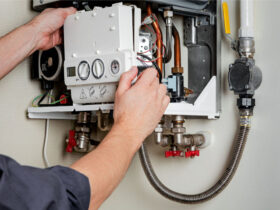When proper health and safety procedures aren’t carried out and both employers and employees aren’t thoroughly educated, construction sites can be a dangerous place. Injuries happen frequently, and the impact of an accident can be severe. To prevent accidents that could potentially be fatal, it’s important that anyone working at a construction site or associated with the industry is fully aware of the best possible ways to stay safe.

There’s a huge variety of tools and machinery available on the market today, and not all are as safe as some of the alternatives. Choosing the right approach to any construction job is key. Safety should always be taken into consideration when examining a new project, rather than merely focusing on budget and logistics. For example, a dig could often be more safely conducted using excavation hydro techniques than by using heavy machinery. This effective and accurate method of digging maintains the integrity of the soil and surrounding environment while offering workers a reduced risk of injury.
Fall protection is one of the key issues in construction safety. While workers should be trained on the safety precautions involved in fall protection, it may be necessary for both site managers and employees to revisit the topic when entering a new site, particularly when excavation areas are involved. Personal fall arrest systems must be checked before each use to ensure that they’re in good working order, and effective fall prevention systems should be guaranteed by the employer whenever necessary, either using guard rails, personal systems, or safety nets.
Unsupported trenches are a particular danger when considering fall protection on construction sites. Even a seemingly small amount of dirt falling at the wrong moment can cause major damage or death. When a worker is inside a trench, special care must be taken to ensure that no cave-ins occur. Sufficient training is required, and a worker with specialist knowledge in safety requirements should check the area before work begins. Protective systems should be put into place before the workers arrive, and employees should be told to contact the appropriate authorities on site if they see any indication that the protection system in place may not be sufficient for the trench.
Personal protection for each and every worker against potential safety hazards should be utilised at all times on any construction site. While hard hats may be an obvious precaution, workers should also remember to wear eye and face protection, particularly when dealing with hazardous materials, chemicals, or vapours. The employer should always provide proper face and head protection, and workers should ensure that the protection is in good condition and firmly secured to the face. Any damage to the protective equipment must be reported and changed immediately.
Work on scaffolds is common in construction, and proper safety precautions should always be taken in these circumstances. Hard hats are essential, as well as work boots that prevent against slipping. Tool lanyards should also be used to keep all tools secure and prevent harm to the workers below, as well as preventing potential tripping risks. Scaffolding must be erected by specialists to ensure that the structure is secure, placed correctly, and positioned away from any power lines. It should be inspected on a daily basis to check that the area is safe for continued work.





